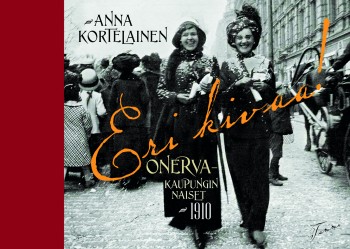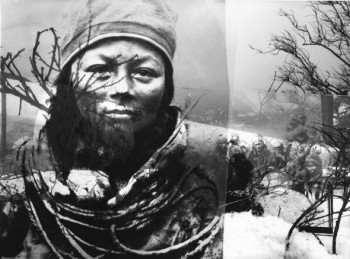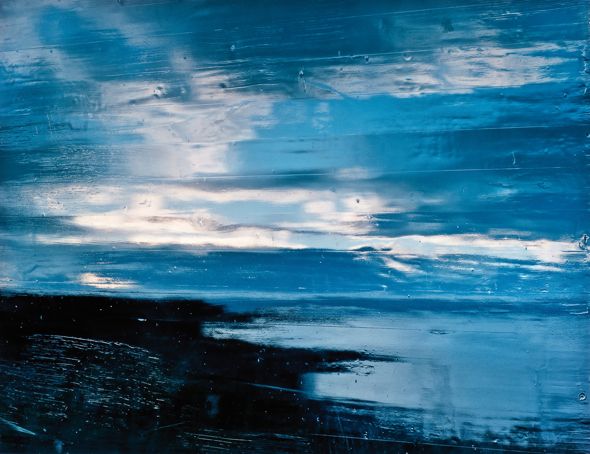Search results for "2010/02/let-us-eat-cake"
The Finlandia Prize for Fiction 2012
13 December 2012 | In the news

Ulla-Lena Lundberg. Photo: Cata Portin
The winner of the 29th Finlandia Prize for Fiction 2012, worth €30,000, is Ulla-Lena Lundberg for her novel Is (‘Ice’, Schildts & Söderströms), Finnish translation Jää (Teos & Schildts & Söderströms). The prize was awarded on 4 December.
The winning novel – set in a young priest’s family in the Åland archipelago – was selected by Tarja Halonen, President of Finland between 2000 and 2012, from a shortlist of six.
In her award speech she said that she had read Lundberg’s novel as ‘purely fictive’, and that it was only later that she had heard that it was based on the history of the writer’s own family; ‘I fell in love with the book as a book. Lundberg’s language is in some inexplicable way ageless. The book depicts the islanders’ lives in the years of post-war austerity. Pastor Petter Kummel is, I believe, almost the symbol of the age of the new peace, an optimist who believes in goodness, but who needs others to put his visions into practice, above all his wife Mona.’
Author and ethnologist Ulla-Lena Lundberg (born 1947) has since 1962 written novels, short stories, radio plays and non-fiction books: here you will find extracts from her Jägarens leende. Resor in hällkonstens rymd (‘Smile of the hunter. Travels in the space of rock art’, Söderströms, 2010). Among her novels is a trilogy (1989–1995) set in her native Åland islands, which lie midway between Finland and Sweden. Her books have been translated into five languages.
Appointed by the Finnish Book Foundation, the prize jury (researcher Janna Kantola, teacher of Finnish Riitta Kulmanen and film producer Lasse Saarinen) shortlisted the following novels: Maihinnousu (‘The landing’, Like) by Riikka Ala-Harja, Popula (Otava) by Pirjo Hassinen, Dora, Dora (Otava) by Heidi Köngäs, Nälkävuosi (‘The year of hunger’, Siltala) by Aki Ollikainen and Mr. Smith (WSOY) by Juha Seppälä.
Kai Ekholm & Yrjö Repo: Kirja tienhaarassa vuonna 2020 [The book at the crossroads in 2020]
10 December 2010 | Mini reviews, Reviews
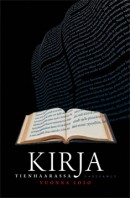 Kirja tienhaarassa vuonna 2020
Kirja tienhaarassa vuonna 2020
[The book at the crossroads in 2020]
Helsinki: Gaudeamus, 2010. 205 p., ill.
ISBN 978-952-495-158-6
€29, paperback
This book looks at Finnish book publishing and its likely rate and direction of change. The future of the Finnish industry looks slightly more favourable than similar international forecasts have made out, although there have been some shake-ups in the Finnish book world too. The authors point out that while the decrease of reading as a leisure pursuit appears to be part of a long-term international trend, many feared for the future of the book in previous centuries as well. Book production and distribution, as well as changes undergone by various genres, are illustrated through a variety of statistics. They also go a long way towards explaining whether the publishing industry’s current difficulties are intrinsic or extrinsic in origin. The authors strive to find new perspectives to get away from a fear of the online world. The renewable publishing and reading culture envisioned by the authors will benefit from the novelty and efficiency of electronic publishing and will reinforce traditional knowledge. Professor Kai Ekholm is the Director of the National Library of Finland; Yrjö Repo is a researcher and statistician.
Asko Sahlberg: Häväistyt [Disgraced]
2 February 2012 | Mini reviews, Reviews
 Häväistyt
Häväistyt
[Disgraced]
Helsinki: WSOY, 2011. 331 p.
ISBN 978-951-0-38275-2
€ 33, hardback
The tenth novel by Asko Sahlberg (born 1964) is reminiscent of the earlier works of this distinctive author: its principal characters are hardened by experience and lead their lives somewhere in the Finnish countryside during a recent period of the country’s history. The sentences are beautifully constructed, and the pace of the narrative is very slow – sometimes even too slow. The main role is played by a middle-aged man who is running away with a woman and a small boy. What they are running away from for a long time remains a puzzle, as does the question of who they are looking for, a man called The Master. In the flashbacks of the last part of the book all is explained, and the rhythm of the story quickens. Considering the book’s desolate, even fatalistic view of the world, it is slightly surprising that everything eventually turns out as happily as in a fairytale. But perhaps this is Sahlberg’s tribute to his characters, and to all of us human beings, for whom he seems to care a great deal? His novel He (2010) will be published in February in England under the title The Brothers (Peirene Press).
Translated by David McDuff
Petri Keto-Tokoi & Timo Kuuluvainen: Suomalainen aarniometsä [The Finnish virgin forest]
12 November 2010 | Mini reviews, Reviews
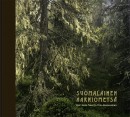 Suomalainen aarniometsä
Suomalainen aarniometsä
[The Finnish virgin forest]
Helsinki: Maahenki, 2010. 302 p., ill.
ISBN 978-952-5870-06-0
€ 48, hardback
This book explains the cultural significance of forests – particularly virgin forests – to Finns. That term is used to refer to old-growth forests in their natural state, characterised by trees of different ages, an abundance of decaying tree remains, and continuous incremental changes. Nowadays around four per cent of Finnish forests are in a natural or near-natural state, and light is being shed on their ecosystems and the history of the slowly vanishing virgin forests. They are associated with deep-seated values and a multiplicity of roles throughout history. To many artists forests have been a significant elemental force, worthy even of worship; peasants and the timber industry have exploited the virgin forests. The authors also consider whether answers to key environmental issues will be found in old-growth forests: safeguarding natural diversity and slowing climate change. In addition to illustrative material from the authors, the book contains photographs by award-winning photographers Ritva Kovalainen and Sanni Seppo.
Kari Kuula: Paholaisen biografia [The biography of the Devil]
13 May 2011 | Mini reviews, Reviews
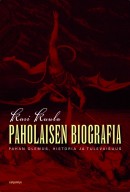 Paholaisen biografia. Pahan olemus, historia ja tulevaisuus
Paholaisen biografia. Pahan olemus, historia ja tulevaisuus
[The biography of the Devil. The essence of evil, history and future]
Helsinki, Kirjapaja, 2010. 381 p.
ISBN 978-951-607-837-6
€ 38, hardback
This book is a chronological study of the Devil, seen through the history of ideas and cultural history. As the Devil is mainly a concept in Christian theology, the most profound studies of his essence have been carried out by experts of this field. The book also studies the Devil’s ‘disciples’, demons, and beliefs related to them. The main theme of the work consists of the history of diabology and demonology, from the Old Testament to contemporary theology. Another central theme is the theological dilemma of why God allows evil and suffering. In the cultural history section the author concentrates on the practical implications of belief in the Devil in different ages as well as parallel phenomena such as possession and belief in witchcraft. Folk tales about the Devil and descriptions of his putative looks as well as some classic works of fiction featuring the Devil are discussed. Kari Kuula is doctor of theology and priest who has published several non-fiction books on the Bible and Christianity.
Northern exposure
21 June 2012 | Reviews
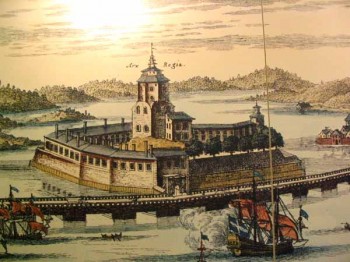
Between Helsinki and St Petersburg: Vyborg. Illustration of Vyborg Castle by an unknown artist, 1709, Wikimedia
Tony Lurcock
‘Not So Barren or Uncultivated’. British travellers in Finland 1760–1830
London: CB Editions, 2010. 230 p.
ISBN 9-780956-107398
£10.00, paperback
Finland is not unique in raising scholars who have often attempted to treat historical travellers’ accounts as source material for historical facts, and then prove how ‘wrong’ they are in relation to reality. This is an unproductive way in which to read them: travel books are nearly always based on the authors’ own country and experiences projected on what they encounter abroad.
Paradoxically, much of what was written about foreign countries in the past was really about conditions and problems in the author’s own land, and can be understood only against that background – something that also emerges in this book about British travellers in Finland. More…
Christmas best-sellers in Finnish fiction
13 January 2012 | In the news

Rosa Liksom. Photo: Pekka Mustonen
Most new Finnish books are printed and sold in the autumn, and sales pick up considerably in December. The number one on the December list link: in Finnish only) of best-selling fiction titles in Finland, compiled by the Finnish Booksellers’ Association, is the Finlandia Fiction Prize-winning novel Hytti nro 6 (‘Compartment number 6’, WSOY, 2011) by Rosa Liksom (this is her homepage, also in English).
The Finlandia winner was announced on 1 December, upon which the book shot – from nowhere – to the top of the list.
Laila Hirvisaari’s historical novel, Minä Katariina (‘I, Catherine’, Otava), climbed up from the third place to the second. Number three was a newcomer, a tragic love story entitled Kätilö (‘The midwife’, WSOY), by Katja Kettu, set in the last phase of the Finnish Continuation War (1941–1944).
Jari Tervo’s Layla (WSOY) was in fourth place, while November’s number one, Ilkka Remes’s thriller Teräsleijona (‘Steel lion’, WSOY), came fifth.
In November Tuomas Kyrö occupied both the fourth and the tenth place with his novels Kerjäläinen ja jänis (‘The beggar and the hare’, Siltala – a pastiche-style story inspired by Jäniksen vuosi / The Year of the Hare by Arto Paasilinna, 1975) and Mielensäpahoittaja (‘Taking offence’, WSOY, 2010). In December they were numbers six and seven, in reverse order.
Women and the city
17 April 2010 | This 'n' that
How was city life for the single woman a hundred years ago in Helsinki?
She could ride a bike, for example, provided it was equipped with an ‘alarm system’ and the speed was not high. Socially she could have fun as long as she obeyed the rules. No admittance to restaurants without male company, for example.
Some young women in those days had to make a living by teaching or by working in an office – before they got married, of course.
A new exhibition (25 March–29 August) at Helsinki’s Ateneum art museum, entitled Kaupungin naiset (‘Women of the city’), focuses on the cultural life of young women in Helsinki in the 1910s through the eyes of the writer and critic L. Onerva (aka Hilja Onerva Lehtinen, 1882–1972). More…
Fair assessment
7 November 2009 | This 'n' that
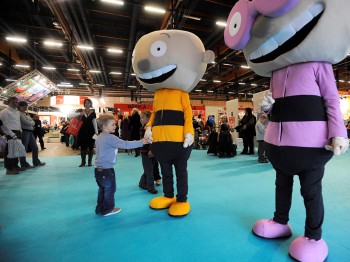
Hello Tatu – or is it Patu?: heroes from the popular children's books by Aino Havukainen and Sami Toivonen meet a fan. – Photo: Suomen Messut
A thousand people more than last year – a record total of 76,800 – attended the Helsinki Book Fair in late October. This year the event was particularly popular with families with children.
More than half of the visitors said they were interested primarily in writer guests, of whom the most popular were, not surprisingly, crime writers, among them Karin Slaughter from the US and Jens Lapidus from Sweden.
Two other fairs, entitled the Wine, Food and the Good Living and the Helsinki Music Fair, were held at the same time at the Helsinki Fairs Centre.
The theme country in 2010 – when the Book Fair celebrates its tenth anniversary – will be France.
Jarkko Laine Prize 2011
1 June 2011 | In the news
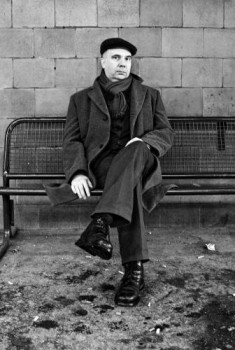
Juha Kulmala. Photo: Lotta Djupsund
The Jarkko Laine Literary Prize (see our news from 6 May), worth €10,000, was awarded to Juha Kulmala (born 1962) on 19 May for his collection of poems entitled Emme ole dodo (‘We are not dodo’, Savukeidas, 2009).
The prize is awarded to a ‘challenging new literary work’ published during the previous two years. Shortlisted were also two novels, Kristina Carlson’s Herra Darwinin puutarhuri (‘Mr Darwin’s gardener’, Otava, 2009) and Erik Wahlström’s Flugtämjaren (‘Fly tamer’, Finnish translation Kärpäsenkesyttäjä, Schildts, 2010).
Jarkko Laine (1947–2006) was a poet, writer, playwright, translator, long-time editor of the literary journal Parnasso and chair of the Finnish Writers’s Union.
Kaipaus Karjalaan. Matkoja kotiseudulle [Longing for Karelia. Journeys to the homeland]
8 October 2010 | Mini reviews, Reviews
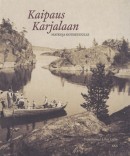 Kaipaus Karjalaan. Matkoja kotiseudulle
Kaipaus Karjalaan. Matkoja kotiseudulle
[Longing for Karelia. Journeys to the homeland]
Toim. [Ed. by] Liisa Lehto
Helsinki: Finnish Literature Society, 2010. 231 p., ill.
ISBN 978-952-222-167-4
€34, hardback
The interest among Finns in making journeys to the areas of Karelia that were lost to the Soviet Union after the wars of 1939–1944 has showed no signs of lessening. On the contrary: the increasing preoccupation of researchers and ordinary citizens with the roots of the Karelians and with their modern way of life makes it possible to speak of a kind of Karelian renaissance. The opening of the borders after the fall of the Soviet Union triggered an enormous enthusiasm for tourism. This book contains fifty accounts of such journeys, drawn from the material of the Finnish Literature Society’s Folklore Archives collected in 1992 and 2007. The personal travel stories are by writers of different ages – the oldest was born in 1906, the youngest in the 1980s – and they focus on attitudes to loss of homeland that range from deep feelings of anger and failure to emotions of joy and of ‘reconciliation with oneself and with the whole of one’s life.’ Acts of purification in the water of the home village well or of swimming in Lake Ladoga are described in terms of a sacred ritual.
Icy prospects
8 October 2010 | This 'n' that
Photographer Jorma Puranen (born 1951) has long been concerned with nature and the representation of northern landscapes, particularly Lapland, as well as light and its reflection.
One of his most famous projects is Imaginary Homecoming. In the 1990s, on a visit in the Musée de l’Homme in Paris, he found some old archive boxes full of glass negatives. They were ethnographical images of the Sámi, taken by G. Roche, employed by the French Count Bonaparte on an expedition to Lapland in 1884.
Puranen took them back to the wildernesses of Lapland and photographed them once more in their native surroundings, where they became a photographic installation in the tundra. He published them in his book Kuvitteellinen kotiinpaluu / Imaginary Homecoming (Pohjoinen, 1999).
Puranen’s 2006 series Icy Prospects explores landscape: the large pictures are made by painting wood with black gloss paint, reflecting the landscape on the wood and photographing the reflection.
Snow, ice, water, sky and trees are portrayed the way that brings Impressionism to mind, as Liz Wells writes in her introduction in the book entitled Icy Prospects, published by Hatje Cantz (Germany, 2009).
A new exhibition of Jorma Puranen’s work from 1992 to 2010, at EMMA, the Espoo Museum of Modern Art, opened on 29 September; it runs until 9 January 2011. Partly retrospective, it features Puranen’s techniques of chromogenic colour and black and white photography, showcasing his highly original style.
Grim(m) stories?
30 April 2010 | Letter from the Editors
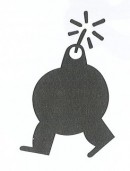 ‘There’s not been much wit and not much joy, there’s a lot of grimness out there.’
‘There’s not been much wit and not much joy, there’s a lot of grimness out there.’
This comment on new fiction could have been presented by anyone who’s been reading new Finnish novels or short stories. The commentator was, however, the 2010 British Orange Prize judge Daisy Goodwin, who in March complained about the miserabilist tendencies in new English-language women’s writing. More…


